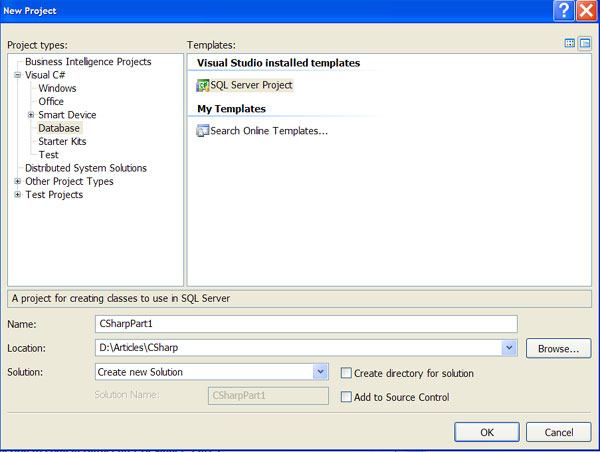
- #How to use adventureworks database with visual studio how to
- #How to use adventureworks database with visual studio series
- #How to use adventureworks database with visual studio windows
I am using Microsoft’s ASP.NET MVC5 (MVC), various open-source libraries and the paid-for Kendo UI package providing various controls.
#How to use adventureworks database with visual studio how to
In this second article I look at how to build a web application that provided a user interface as would be used by an employee of AdventureWorks.
#How to use adventureworks database with visual studio series
In the first article in this series I looked at the problems of getting Entity Framework (EF) to work with existing database like AdventureWorks. See this link for a database diagram (pdf). The AdventureWorks database is for a fictitious multinational manufacturing company producing and selling pedal cycles. For this I chose Microsoft’s sample AdventureWorksLT2012 database, which is a cut-down version of the larger AdventureWorks OLTP database. I undertook this project because I wanted to check that some of my own libraries, which use Microsoft’s Entity Framework (EF), could handle a database that has a slightly more realistic level of complexity. The problem is that the simple examples do not cover all the complicated issues that can show in the real world that has more complex databases. However in order to get the basic ideas across, these examples often choose to pick rather simplistic database schemas. There are many examples of how to build ASP.NET MVC (MVC) web applications on the web. With this approach, we can only deploy a single ISPAC file.Using Entity Framework with an Existing Database: User Interface - Simple Talk Skip to content Make sure to have the entire command in one line.
#How to use adventureworks database with visual studio windows
Importantly, note here we are using Windows authentication to deploy the ISPAC file. Using the following command you can deploy the ISPAC file to the destination server. Deploy ISPAC File Using ISDeploymentWizard.exe – Command Line

Here you will find only important command-line arguments, you can view all the arguments with the above command if needed.įigure 2 – ISDeploymentWizard.exe Command Line Arguments. Go to command prompt and run IsDeploymentWizard.exe /? Command to understand possible command line arguments. \Program Files (x86)\Microsoft SQL Server\150\DTS\Binn ISDeploymentWizard.exe – Command Line Arguments \Program Files (x86)\Microsoft Visual Studio\2017\SQL\Common7\IDE\CommonExtensions\Microsoft\SSIS\150\Binn In case your environment path is not set to SQL Server directly, you can use the absolute path for this file. On my machine it is under folder 150 (Compatibility level), it may vary in your case, look for in 130/140 folder based on your set compatibility level. The file can be found on following paths, and you should be able to use it from the command prompt at any path without setting the environment variable. This command-line utility is by default installed with Visual Studio (SSDT). ISDeploymentWizard.exe – File Default Path Figure 1 – Integration Services Deployment Wizard – GUI Based.

This utility is nothing but a command-line version of GUI based Integration services deployment wizard. We can utilize ISDeploymentWizard.exe command-line utility. However, often we require to automate the deployment process to quickly deploy ISPAC file and SSIS packages using the command line. We already have a GUI based Integration Services Deployment Wizard as shown in figure 1. We can also deploy only selected packages using the existing deployment wizard from the command line. ISPAC file deploys all the SSIS packages. Besides, deploying SSIS projects from Visual studio is equivalent to deploying ISPAC files in the back hood. When we build SSIS project it creates an ISPAC file under the bin folder. ISPAC file referred to as deployable output file generated from SQL server integration projects. This can speed up the deployment and help in automating the deployments.

ISPAC file & SSIS packages can be deployed from the command line.


 0 kommentar(er)
0 kommentar(er)
